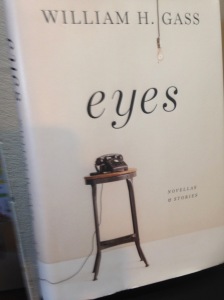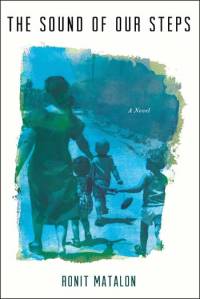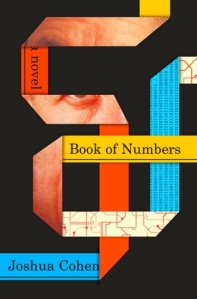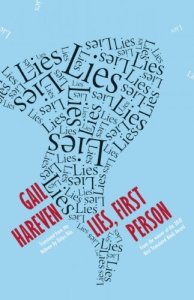My review of Captivity by György Spiró appears in New York Journal of Books. Read that review first. Additional remarks that appeared in a different and now defunct publication begin with the next paragraph.
Jewish books: Gyorgy Spiro's Captivity portrays First Century Roman Jewry
Was there ever an era like the current one when Jews simultaneously participated in their own and a global culture both in the land where their people and civilization originated and in a large diaspora? There was indeed in the Roman Empire during the decades preceding the First Jewish Revolt. That time and place are brought to life through the nearly blind eyes of Uri, a Roman Jew and the central character in György Spiró’s suspenseful 860 page novelCaptivity, which is now available to English readers in Tim Wilkinson’s fine translation. In my New York Journal of Books review I praise the book as a “novel that educates and entertains.”
Uri, whose Roman name is Gaius Theodorus, is a polyglot and polymath who lives in two cultures and doesn’t feel completely at home in either. He finds few aspiring scholars among his fellow Roman Jews of the working and mercantile class, and he is not always welcome among his polytheist fellow Roman citizens. Other reviewers have noted Uri’s misogyny, but that may be the result of both his cultural elitism and the fact that most women in his acquaintance are illiterate.
Uri’s adventures take him from his native Rome to Jerusalem, Alexandria, and back to Rome again. Alexandria is far wealthier and culturally more sophisticated than Rome, but the anti-Semitism Uri experiences in Rome is casual compared to the virulent form he experiences at the hands of Alexandria’s Greeks who, incited by a lame duck praefect, herd their Jewish neighbors into a ghetto and murder them in a manner that calls to mind Eastern Europe in the 1940s. Roman soldiers rescue Alexandia’s Jews in 38 c.e., which is ironic considering that during three revolts starting three decades later Roman legions would kill millions of Jews.
Alexandria’s Jewish community of 300,000 (out of a total one million Egyptian Jews) was centuries older than Rome’s Jewish community which numbered 40,000 in 35 c.e. and grew to 200,000 after the defeat of the First Jewish Revolt. Uri learns that Alexandria’s Jews were Sadducees who followed the laws of the Torah literally and did not believe in an afterlife unlike Rome’s Pharisee Jews whose interpretation of the Torah was arrived at through exegesis and who believed in the future resurrection of the dead coincident with the arrival of the messiah. Spiró’s portrayal of religiously conservative First Century Judaea appears to invite a comparison with ideologically conservative contemporary Israel.
Spiró has said that he chose to write historical fiction rather than a history book to give himself the freedom to make things up. In my NYJB review I mention several historical inaccuracies and anachronisms. In addition to those, others include his indicating that the first day of the Jewish month of Tishri is the day before Rosh Hashanah when it is indeed the first day of the Jewish New Year. Another is at a funeral where eight Jews only two of whom are adult males recite Mourner’s Kaddish, a prayer that readers of Leon Wieseltier’s book Kaddish know did not yet exist in the First Century, and when it did emerge centuries later would require a quorum of ten Jewish men.
Spiró also writes that the First Jewish Revolt resulted in two million Jewish deaths, but that sounds more like the total of that revolt and the Bar Kochba revolt six decades later. Prior to those revolts the world Jewish population was five and a half million of whom one million lived in Babylonia and Persia in the Parthian Empire with the remaining four and a half million in the Roman Empire the majority of whom lived in the diaspora. That means that the Jewish population of Judaea and Galilee could not have exceeded two million. Since we know that the casualties of the Third Jewish Revolt (the Bar Kochba revolt) exceeded those of the First Jewish Revolt (the Second Jewish Revolt took place in the Diaspora), the total number of Jews killed in the First Jewish Revolt could not have equalled the entire Jewish population of the country.
I close my NYJB review by advising readers not to let such inaccuracies (which only a history nerd such as I would notice) or the book’s length prevent them from enjoying this enlightening, engrossing and accessible page turner.
Jewish books: Gyorgy Spiro's Captivity portrays First Century Roman Jewry
Was there ever an era like the current one when Jews simultaneously participated in their own and a global culture both in the land where their people and civilization originated and in a large diaspora? There was indeed in the Roman Empire during the decades preceding the First Jewish Revolt. That time and place are brought to life through the nearly blind eyes of Uri, a Roman Jew and the central character in György Spiró’s suspenseful 860 page novelCaptivity, which is now available to English readers in Tim Wilkinson’s fine translation. In my New York Journal of Books review I praise the book as a “novel that educates and entertains.”
Uri, whose Roman name is Gaius Theodorus, is a polyglot and polymath who lives in two cultures and doesn’t feel completely at home in either. He finds few aspiring scholars among his fellow Roman Jews of the working and mercantile class, and he is not always welcome among his polytheist fellow Roman citizens. Other reviewers have noted Uri’s misogyny, but that may be the result of both his cultural elitism and the fact that most women in his acquaintance are illiterate.
Uri’s adventures take him from his native Rome to Jerusalem, Alexandria, and back to Rome again. Alexandria is far wealthier and culturally more sophisticated than Rome, but the anti-Semitism Uri experiences in Rome is casual compared to the virulent form he experiences at the hands of Alexandria’s Greeks who, incited by a lame duck praefect, herd their Jewish neighbors into a ghetto and murder them in a manner that calls to mind Eastern Europe in the 1940s. Roman soldiers rescue Alexandia’s Jews in 38 c.e., which is ironic considering that during three revolts starting three decades later Roman legions would kill millions of Jews.
Alexandria’s Jewish community of 300,000 (out of a total one million Egyptian Jews) was centuries older than Rome’s Jewish community which numbered 40,000 in 35 c.e. and grew to 200,000 after the defeat of the First Jewish Revolt. Uri learns that Alexandria’s Jews were Sadducees who followed the laws of the Torah literally and did not believe in an afterlife unlike Rome’s Pharisee Jews whose interpretation of the Torah was arrived at through exegesis and who believed in the future resurrection of the dead coincident with the arrival of the messiah. Spiró’s portrayal of religiously conservative First Century Judaea appears to invite a comparison with ideologically conservative contemporary Israel.
Spiró has said that he chose to write historical fiction rather than a history book to give himself the freedom to make things up. In my NYJB review I mention several historical inaccuracies and anachronisms. In addition to those, others include his indicating that the first day of the Jewish month of Tishri is the day before Rosh Hashanah when it is indeed the first day of the Jewish New Year. Another is at a funeral where eight Jews only two of whom are adult males recite Mourner’s Kaddish, a prayer that readers of Leon Wieseltier’s book Kaddish know did not yet exist in the First Century, and when it did emerge centuries later would require a quorum of ten Jewish men.
Spiró also writes that the First Jewish Revolt resulted in two million Jewish deaths, but that sounds more like the total of that revolt and the Bar Kochba revolt six decades later. Prior to those revolts the world Jewish population was five and a half million of whom one million lived in Babylonia and Persia in the Parthian Empire with the remaining four and a half million in the Roman Empire the majority of whom lived in the diaspora. That means that the Jewish population of Judaea and Galilee could not have exceeded two million. Since we know that the casualties of the Third Jewish Revolt (the Bar Kochba revolt) exceeded those of the First Jewish Revolt (the Second Jewish Revolt took place in the Diaspora), the total number of Jews killed in the First Jewish Revolt could not have equalled the entire Jewish population of the country.
I close my NYJB review by advising readers not to let such inaccuracies (which only a history nerd such as I would notice) or the book’s length prevent them from enjoying this enlightening, engrossing and accessible page turner.












